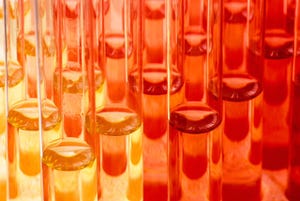Students Test Stent Material in Simulated Arteries
May 27, 2011
Device designers are likely familiar with achieving very different results when testing components in vivo, compared with those obtained in vitro. A team of students at Michigan Technological University (Houghton, MI) have made advances in testing stent materials both inside and outside the body, however, by testing materials in the aortas of rats. This method has enabled them to create a way to replicate what happens to manmade devices inside a simulated blood vessel.
|
Students created a simulated artery environment to get in vivo results for stent material testing. Image credit: Marcia Goodrich/ Michigan Technological University |
An interdisciplinary senior design team at Michigan Tech, funded by medical device manufacturer Boston Scientific, implanted tiny wires in the aortas of rats, subjects much smaller than the rabbits and pigs traditionally used for stent testing. Over time, the wires became coated by calcium and phosphorus, and eventually a layer of cell tissue. Next, the team created a cell culture medium chemically similar to blood by using iron, magnesium, and a protein involved in blood clotting called fibrin. The same wire samples were placed in containers inside an incubator; flow chambers were used to create circulatory fluid flow over the coated wires.
The wire corrosion results were the same in the rats and in the fibrin mixture. "In the past, in vivo and in vitro corrosion rates have always been different," says Jaroslaw Drelich, an associate professor of materials science and engineering and the group's coadvisor. "These appear to be identical."
According to Jeremy Goldman, an associate professor of biomedical engineering and the team's other coadvisor, Boston Scientific is impressed so far with the results obtained by the students. The company is particularly interested in investigating bioabsorbable stents, which are absorbed into the body over time.
"The rat model could help reduce reliance on large animals. And the students' in vitro model might make it possible to reduce the use of animals overall," Goldman says. "They've done cutting-edge work. For undergraduates to accomplish this shows a high level of effort and dedication."
You May Also Like



